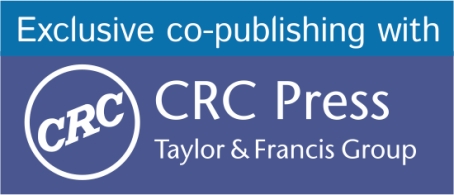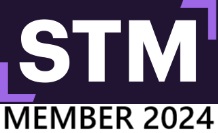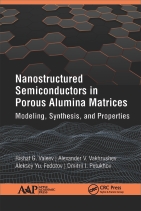|
|
Reviews “The book for the first time discusses in detail the processes of obtaining nanoscale semiconductor structures from their modeling, describes the features of their synthesis, and presents the results of the study of their properties. Various modern research methods and fairly common technologies for the formation of thin films have been used. The results of theoretical calculations and the characteristics of the experimental samples obtained are confirmed with a specific example of the production of electroluminescent composite ZnS:(Cu, Mn) nanostructures in the anodic alumina porous matrix. Of course, the book will be useful for students, scientists, developers, and researchers of advanced areas of science and technology, aimed at creating new functional devices and devices using the capabilities of various technologies.” —Nikolai I. Mukhurov, Professor, Head of the Laboratory of the Micro- and Nanosensoric, SSPA “Optics, Optoelectronics and Laser Technology”, National Academy of Sciences of Belarus, Minsk, Belarus Now Available in Paperback CONTENTS: About the Authors / Editors: Editors: Rishat G. Valeev, PhD Senior Researcher, Department of Physics and Chemistry of Surface, Physical-Technical Institute of the Ural Branch of the Russian Academy of Sciences Rishat G. Valeev, PhD, is a Senior Researcher in the Department of Physics and Chemistry of Surface of the Physical-Technical Institute of the Ural Branch of the Russian Academy of Sciences. Dr. Valeev has over 200 publications to his name, including chapters in monographs, articles, reports, reviews, and patents. He managed several scientific projects, including one funded by the Russian President, projects of the Russian Federal Programs, and projects of the Program of Presidium of the Russian Academy of Sciences. His research interests include light-emitting semiconductor nanostructures, EXAFS-spectroscopy, development of physical vapor deposition methods for evaporation of semiconductors and metals, application of porous alumina for synthesis of nanostructures, cathodic hydrogen production, and investigation of basic laws relating to the structure and macro characteristics of nanostructures. He is an expert of the Russian Science Foundation and is affiliated with the Journal of Structural Chemistry, Semiconductors Science and Technology, Materials Research Express, and others. Alexander V. Vakhrushev, DSc Head, Department of Mechanics of Nanostructures, Institute of Mechanics of the Ural Branch of the Russian Academy of Sciences; Head, Department of Nanotechnology and Microsystems, Kalashnikov Izhevsk State Technical University, Russia Alexander V. Vakhrushev, DSc, is the Head of the Department of Mechanics of Nanostructures of the Institute of Mechanics of the Ural Branch of the Russian Academy of Sciences and Head of the Department of Nanotechnology and Microsystems of Kalashnikov Izhevsk State Technical University. Dr. Vakhrushev is a corresponding member of the Russian Engineering Academy. He has over 400 publications to his name, including monographs, articles, reports, reviews, and patents. He has received several awards, including an Academician A. F. Sidorov Prize from the Ural Division of the Russian Academy of Sciences for significant contribution to the creation of the theoretical fundamentals of physical processes taking place in multi-level nanosystems and Honorable Scientist of the Udmurt Republic. He is currently a member of editorial board of several journals, including Computational Continuum Mechanics, Chemical Physics and Mesoscopia, and Nanobuild. His research interests include multiscale mathematical modeling of physical-chemical processes into the nano-hetero systems at nano-, micro-, and macro-levels; static and dynamic interaction of nanoelements; and basic laws relating the structure and macro characteristics of nano-hetero structures. He has published several books, including Computational Multiscale Modeling of Multiphase Nanosystems: Theory and Applications, Theoretical Foundations and Application of Photonic Crystals, and Nanomechanics. Aleksey Yu. Fedotov, PhD Senior Researcher, Department of Mechanics of Nanostructures, Institute of Mechanics of the Ural Branch of the Russian Academy of Sciences; Docent, Department of Nanotechnology and Microsystems of Kalashnikov Izhevsk State Technical University, Russi Aleksey Yu. Fedotov, PhD, is a Senior Researcher in the Department of Mechanics of Nanostructures of the Institute of Mechanics of the Ural Branch of the Russian Academy of Sciences and docent of the Department of Nanotechnology and Microsystems of Kalashnikov Izhevsk State Technical University. Dr. Fedotov’s main area of scientific interest is the study of the processes of formation and interaction of nanoparticles and the study of the dependence of the properties of composite materials on the quantitative, dimensional, and structural parameters of inclusions. He has over 80 publications to his name, including monographs, articles, reports, reviews, and patents. He has received several awards, including an Academician A. F. Sidorov Prize from the Ural Division of the Russian Academy of Sciences for the best work in applied mathematics on the topic “Creation of a software complex for multilevel mathematical modeling of physical and chemical processes in nanomaterials.” Dmitrii I. Petukhov, PhD Researcher, Department of Physics and Chemistry of Surface, Physical-Technical Institute of the Ural Branch of the Russian Academy of Sciences, Russia Dmitrii I. Petukhov, PhD, is a Researcher in the Department of Physics and Chemistry of Surface of the Physical-Technical Institute of the Ural Branch of the Russian Academy of Sciences. Dr. Beltiukov has about 100 publications to his name. His research interests include synthesis of semiconductor nanostructures and nanocomposite systems such as nanowires, quantum dots, and nanocrystallites in an oxide matrix, investigation of their structure, morphology, optical characteristics, and electron structure. |

 Follow us for the latest from Apple Academic Press:
Follow us for the latest from Apple Academic Press:
New Book Series: AAP Series on Waste Biomass Valorization will explore the transformation of biomass resources into valuable products, addressing the growing need for sustainable alternatives to fossil fuels and non-renewable resources. This series sits at the intersection of environmental science, renewable energy, and sustainable development, highlighting the potential of biomass conversion technologies to mitigate climate change, reduce waste, and foster economic growth. By converting biomass waste streams into biofuels, bioproducts, and bio-based materials, this series seeks to offer innovative solutions to pressing environmental and societal challenges. For more information and to propose a book, please visit: Click here
Congratulations to Hafiz Ansar Rasul Suleria, PhD, for receiving the Dean’s Award for Excellence in Research from the University of Melbourne, Australia, in recognitation for his exceptional performance and strong commitment to advanced research in food science. Dr. Suleria is editor of AAP’s book series Innovations in Plant Science for Better Health: From Soil to Fork. For more information, visit: Click here Congratulations to Dr. Christian Mancas. His book Conceptual Data Modeling and Database Design: A Fully Algorithmic Approach was one of the 6 Best Data Modeling ebooks for Beginners by BookAuthority, a leading site for book recommendations. For more information, visit: Click here Announcing a new book series: AAP Insights in Women’s and Gender Studies: Reshaping Identities is on a mission to revolutionize the conversation around gender, identity, and societal dynamics. The series aims to bridge the gap between academic rigor and practical application, providing tools that empower educators, researchers, students, and activists to spark change and advance the cause of gender equality around the world. For more information, visit: Click here AAP Editor & Author Dr. Wasim Siddiqui to Lead the World Food Preservation Center, USA AAP congratulates Professor Mohammed Wasim Siddiqui on this new and prestigious appointment. In this role, he directs the planning, development, and implementation of plans within the organization, which is dedicated to reduction of postharvest food loss and wastage. Dr. Siddiqui will also originate and promote existing initiatives of the sister universities and institutes of the World Food Preservation Center® LLC. Dr. Siddiqui is editor of two book series with AAP. For more information, visit: Click here Announcing a new AAP book series: Perspectives and Anthropology in Tourism and Hospitality (PATH) For more information, visit: Click here The new AAP book series Innovations in Microbiology welcomes book proposals. For more information, see: Click here COMMENTS FROM AAP EDITORS AND AUTHORS AAP book title: Advances in Audiology and Hearing Science (2-volume set) “I have collaborated with AAP during the process of bringing my two-volume editing work " Advances in Audiology and Hearing Science" to a final publishing phase. Despite the fact that the book brought together 41 different authors (with very different writing styles), AAP support has been truly important throughout the initial and final stages of the book. While the majority of the publishing work is done at the early stages, the final touches that include the last-minute corrections of the authors are extremely crucial to the quality the book tries to convey. The assistance of AAP during the last stages of corrections and communication with the authors was a very positive contributor to my state of mind during those stressful moments. I recommend the publishing experience with AAP to other editors of scientific material.” —Stavros Hatzopoulos, PhD, Hearing Science Laboratory, University Hospital of Ferrara, Ferrara, Italy AAP book title: Nanotechnologies: The Physics of Nanomaterials (2-volume set) “As the author of a two-volume book on nanotechnologies, I was very pleased with the interaction and support of the team at Apple Academic Press. They provided me with regular and useful information and updates throughout the publishing procedure. I am also very happy with the final product, which is of good quality. The books are now available and are professionally distributed through the various channels. I would like again to thank the team at AAP for all their hard work and support.” —David Schmool, PhD, Director, Groupe d’Etude de la Matière Condensée GEMaC, National Centre for Scientific Research, Université de Versailles/Saint-Quentin, Université Paris-Saclay,Versailles, France AAP book title plus many others: Physiology of Molluscs (2-volume set) “Since my first recent association, I have enjoyed the full benefit of support, encouragement, and kindness from the members of AAP I have had the pleasure of being associated with. In the same vein, I hope AAP was satisfied with the book series I have edited in advancing the knowledge. It has been a great journey and was a great pleasure and satisfaction. Advancing scholarship through publications is one of the best routes publishers can take, and I would hold AAP as one of the best ones.” —Saber Saleuddin, PhD, University Professor Emeritus, Department of Biology, York University in Toronto, Ontario, Canada AAP book title plus many others: Green Chemistry and Sustainable Technology: Biological, Pharmaceutical, and Macromolecular Systems “It had been my pleasure to work with the production team of Apple Academic Press for almost a decade. The best presentation of our work was due to their hard work and with careful scrutiny. I am sure that every one of them takes extra pains to publish the book nicely, maintaining the quality and timeliness. It was a rewarding experience to work with AAP. I would like to publish more with AAP on my upcoming projects in future also.” —Prof. Suresh C. Ameta, Professor of Eminence (Distinguished Professor), Faculty of Science, PAHER University, UDAIPUR, India AAP book title: New Frontiers in Nanochemistry, 3-volume set, plus many others "Publishing a book, either as author or editor, is a journey from the initial vibration to the piece of knowledge towards the present future of humanity at large. Such a journey is about climbing and tunneling, about diving and driving through, about inspiration and tuning, about hard working in every instance; and it is also about time. Very few Global Publishers have the wisdom and patience and kindness and openness to authors, contributors, and readers while being truly crafting oriented as Apple Academic; yet all is about people and their education, vision and assumed mission; the Apple Academic Team heartily succeed that in achieving the world class scholarly acclaim by the quality involvement in all chain of plus value added with each publishing event. Hearty Compliments! Excelsior Apple Academic!" —Mihai V. Putz, PhD, Dr.-Habil., MBA, Professor, Faculty of Chemistry, Biology, Geography, Laboratory of Computational and Structural Physical Chemistry for Nanosciences and QSAR, West University of Timi?oara; PI-1, Laboratory of Renewable Energies - Photovoltaics, National Research and Development Institute for Electrochemistry and Condensed Matter (INCEM), Timi?oara, Romania AAP book title: The Chemical Century: Molecular Manipulation and Its Impact on the 20th Century “All my experiences with AAP have been very positive. I entrusted AAP with the publication of The Chemical Century: Molecular Manipulation and Its Impact on the 20th Century and found the quality of the book that they produced to be excellent. My two contacts at the company were very responsive and efficient throughout the publication process.” —Richard J. Sundberg, PhD, Professor of Chemistry, University of Virginia, Charlottesville, Virginia, USA AAP book titles: Medical Tourism and Wellness: Hospitality Bridging Healthcare (H2H)© and Medical Travel Brand Management: Success Strategies for Hospitality Bridging Healthcare (H2H) “I have enjoyed my scholarly creative work with Apple Academic Press. They have been timely, creative, and very helpful for my two books with them. I encourage you to consider publishing your work with AAP.” —Frederick DeMicco, PhD, RDN, Executive Director and Professor School of Hotel and Restaurant Management, Northern Arizona University, Flagstaff, Arizona AAP book title: Coping with Biological Growth on Stone Heritage Objects: Methods, Products, Applications, and Perspectives “It was a wonderful day when, some years ago, AAP accepted to publish the book on which I’ve been working for years. My experience was very good and confirms that AAP is a publisher of quality and looks for quality books. Everyone on the AAP team gave me the utmost care for which I will always be grateful. They took the time to discuss my proposal. This meant transforming some aspects and changing the proposal, but it made for a stronger and better book. I really appreciated the team members for outstanding performance and the skills they used to achieve that performance. I am very thankful for their help and effort, for their professional guidance and assistance.” —Daniela Pinna, Department of Chemistry, University of Bologna, Italy AAP book title: The Chemical Evolution of Phosphorus: An Interdisciplinary Approach to Astrobiology “I’m very pleased with the books you have edited. It shows a very good and careful work by everyone involved along the whole production process, and so the final result is a beautiful piece: it has come out as a very nice and appealing book, easy to handle and read, .... and hopefully of interest for people from diverse related fields!” —Enrique Macia-Barber, PhD, Professor of Condensed Matter Physics, Universidad Complutense de Madrid, Spain |



